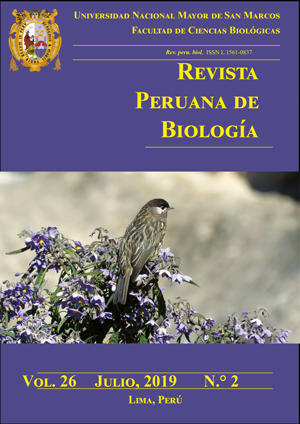Ontogenetic and secondary sexual dimorphism variation in Platalina genovensium (Chiroptera: Phyllostomidae)
DOI:
https://doi.org/10.15381/rpb.v26i2.15337Keywords:
age, fetus, mandible, morphology, skull, variationAbstract
Ontogenetic development and sexual dimorphism in bats are aspects frequently studied; however, this information is not available for Platalina genovensium, a threatened bat species that occurs in dry ecosystems between Peru and Chile. In this study, I present the first information about the ontogeny and sexual dimorphism of the species based on the review of collection specimens. I analyzed 31 specimens including juveniles and adults to assess ontogeny. Sexual dimorphism was tested by statistical and multivariate analysis using one external and 14 cranio-dental variables on adults only. Descriptions of juvenile (age class I) and adult stages (age classes IV and V) are presented, as well as the skull of a fetus. I found that the forearm length did not present statistically supported differences between sexes, whereas at the cranial-dental level, the mandibular branch width was the main dimorphic variable. I suggest that the differences reported between juvenile and adult specimens and between females and males should be understood from the perspective of evolution and adaptation and not only ontogenetically.
Downloads
Downloads
Published
Issue
Section
License
Copyright (c) 2019 Dennisse Ruelas

This work is licensed under a Creative Commons Attribution-NonCommercial-ShareAlike 4.0 International License.
AUTHORS RETAIN THEIR RIGHTS:
a. Authors retain their trade mark rights and patent, and also on any process or procedure described in the article.
b. Authors retain their right to share, copy, distribute, perform and publicly communicate their article (eg, to place their article in an institutional repository or publish it in a book), with an acknowledgment of its initial publication in the Revista Peruana de Biologia.
c. Authors retain theirs right to make a subsequent publication of their work, to use the article or any part thereof (eg a compilation of his papers, lecture notes, thesis, or a book), always indicating its initial publication in the Revista Peruana de Biologia (the originator of the work, journal, volume, number and date).






